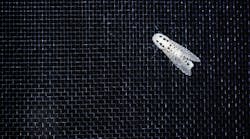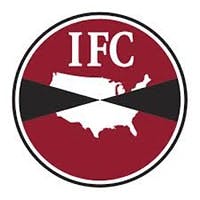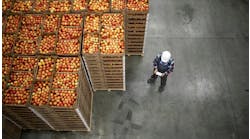No one likes a pest invasion, especially when you’re running a multimillion-dollar food and beverage operation. Not only can birds, rodents, and insects be a nuisance, they’re also a food safety issue and a liability. How can you prevent pests from getting in to your facility?
With us on the Food For Thought podcast today are Jerry Heath and Sharon Dobesh of Industrial Fumigant Company (IFC). In this episode, we’re talking all about the strategies to keep outside pests from getting in your facility as well as what you can do if they do get in.
Transcript
Erin: It’s the time of year that I’ve noticed even around my own home is the uptick of the number of flies or bugs I see flying around. I would imagine food processors have a very similar issue. What type of pests would processors typically expect to see in the spring?
Sharon: We're going to see all kinds of pests. It's going to include birds, rodents, and insects. Rodents are typically going to be mice and rats. There could be some other wildlife as well. Several different species of birds. And when it comes to insects, you're going to, especially early in the year, see a lot of flies. Things like ground beetles are going to start getting active, roly-polies, other insects, such as the nighttime flying moths. as the spring progresses into early summer, then eventually just start seeing a little of everything.
Jerry: Some of those invaders that we typically see in the spring are truly seasonal spring invaders and others are really year-round pests that just become active again or more active in the spring, such as the rodents that they're truly year-round.
Erin: What would you say are the most common outside areas that facilities see pest activity?
About IFC
The Industrial Fumigant Company (IFC) is a national provider of pest management and sanitation solutions exclusively to the food industry. The company has worked directly with the food and commodity industries since 1937. Learn more about them on their website
Jerry: One in particular that comes to mind would be somewhere around the front entrance to a facility where there's frequently some shrubbery or a little bit of landscaping, and oftentimes bark mulch. And that bark mulch is just tremendous pest habitat for some of those things that Sharon just mentioned. The millipedes and ground beetles, and so forth just love that ground bark mulch material. And for that matter, rodents as well. They always seem to come around and spread fresh mulch in this part of the country and central United States a lot about February. And that is just the one most wonderful bedding for rodents. There are remedies for that. We always like to recommend that bark mulch be replaced with gravel mulch systems that won't be such a good habitat for many, many different kinds of pests.
Another hotspot for activity of invaders is going to be around any waste collection area, dumpsters, compactors, things of that nature. Again, that's a year-round attraction. And then there are other areas, like dock doors, where there might be outdoor lights and trucks coming and going and doors open and allowing for entry along dock doors and so forth.
Sharon: Keep in mind also that things like boneyards and construction areas are another really heavy area. As spring comes in, a lot of facilities start looking at upgrades and other work that they need to do. That can be another area that there can be harborages and insects that either come in with materials that come on to site or that they've taken up residency in.
Jerry: And one more is even the roof, which tends to collect an awful lot of debris. In many food processing plants there are flour and similar kinds of materials that get blown out onto the roof from time to time. And that material becomes very highly attractive to lots and lots of pests. So, there is a point of entry as well.
Erin: One of the things we mentioned before was about flies, and I know we've heard those can be a real concern for many facilities. How does IFC handle that type of call?
Jerry: We always try to find the root cause, whatever it is that's the main attraction to the flies—and many things can attract flies at a food plant. Sometimes it's just the side of a building that the sunshine hits and makes a nice warm place for them to roost and so forth, and they go around the corner and they're in the door. Other times it's neighboring farms or whatever it might be that they create odors that are attractive or habitat. We try to find that point of attraction. Or it might the food plant waste materials and how that's being handled.
And then number one, with flies, at least the larger flies, would be the simple advice to keep the doors closed. Most of the large flies come in as invaders, as opposed to small flies, such as drain flies, fruit flies, and some other kinds of small flies that are actually living and breeding within the food plant, and that's a whole different category. But when most people talk about flies, I think they're talking mostly about the large flies and they are more inclined to actually be later in the summer to reach their peak populations and peak problem times.
Erin: Why is it that we start seeing stored product pests in the spring, but don't have any in the winter?
Sharon: A lot of times we just think of stored product pests as being indoors or in ingredients and things, but they are actually a communal-type insect. They occur naturally in nature. Just like flies, we take a look around at that environment that the facility is located in, if there are by chance grain fields that have been harvested, they can be hiding in that debris in the fields and surviving on the grain that's fallen to the ground. Again, things like feedlots or grain elevators nearby where grain is stored. There's also any other grain outside their own facility that hasn't been cleaned up as well as other storage products. That all gets back to cleaning up waste and other attractants that naturally occur in the environment. Some of them can fly two to three miles easily to get to a new site. In the spring when it starts warming up and they can get active, they do naturally start to disperse and fly around just because they are naturally in the environment.
Jerry: We think of those insects as being grain feeders primarily, but they're much more general in their feeding behaviors than that, actually. The pollen in many flowers would be very nutritious and very attractive to them and many kinds of seeds, weeds and things outdoors produce seeds that aren't much different than grain. They find a lot of things to feed on in nature. The population levels can actually be higher outdoors than indoors, surprisingly.
Sometimes a good idea to maintain a couple of the stored product pest pheromone traps for the fly-in types at a couple of outdoor locations around the food processing plants just to have a little bit of a monitor on the outdoor population. Compare that to what's going on indoors. But again, you might be surprised that there would be a lot more captures outdoors than would be captured indoors in monitoring traps.
Erin: Food facilities have a lot of cleaning protocols in place, and because of that, you'd think there would be fewer pests, yet that doesn't seem to be the case. Why are pests attracted to food plants?
Jerry: There are lots of reasons. I think I touched on a couple earlier. It might be just a sunny outdoor wall that is warm and attractive for things like flies to roost on, might be cooler temperatures on the interior that are attractive on particularly hot, dry days. And probably the biggest factor would be odors, odors that come from the processing that will be attractive to flies around the outdoor neighborhood of the food plant and odors that are present in the immediate exterior area from spillage and the waste containers and such that have collected wastes and have gotten wet and started to ferment and mold and so forth. It just makes a very attractive situation for lots of pests. That could be rodents, roaches, flies, and others. And for that matter, even some of that organic debris and so forth could be a medium for development of pathogens. So, you got a whole complex of vectors in these pests and also mediums for pathogens. It really is an area that throughout the whole food processing industry is needing more attention to keep those waste collection and disposal facilities in a little better sanitary condition.
Erin: Let's shift for a bit and talk about birds. How can they impact a facility? And a follow-up to that, how can we remedy birds from getting in or causing issues?
Sharon: Birds are going to be attracted to all kinds of things. Odors are going to draw them in, but in particular, they really like to have a food source. Birds naturally scope out the facility and get used to the patterns and know when the food is going to be out and know when to swoop in. Most important in the Spring is to keep them from setting up a roosting site, because once they get their nests established and they start getting into that pattern of egg-laying and things, it's very difficult to remove birds after that point. It's easier to discourage them and keep them away if you keep things cleaned up and if you can scare them off and get them out of the area of the facility prior to them getting their roosting and their nesting sites well-established for the year.
How can you remedy birds? There's a lot of different types of products out there. Unfortunately, with birds, there's never really a silver bullet or a one-size-fits-all. There are scare tactics, either visual or noise-type scare tactics. There's bird netting to keep them out of some areas. If you're trying to keep them out of certain ledges or around rooftop equipment, you can put up netting that they can't get through. There are also ways to take care of them if they get inside a facility using things like mist nets. There's a lot of different things that can be used and the key is usually rotation and not just putting something out there and expecting it to take care of your bird problem, but to rotate different tactics and to continually stay on top of it. It's a tough one.
Guest Profile: Jerry Heath
Jerry Heath, Board Certified Entomologist, serves a broad range of technical service needs for IFC’s food industry clients. With nearly forty years of experience, Jerry’s career has focused exclusively in the fields of entomology and pest management in academic and several industrial settings.
Jerry: I once analyzed all the different bird products on the market, and I came up with about 100 different more or less unique products or techniques. Most of those on the market are suited for low-pressure situations. And that would be birds that are coming in and landing on a roof and spending a little bit of time and flying away. But when you get birds that start to spend the night or nest, that is absolutely the highest level of bird pressure. And as Sharon was saying, if they establish nests, it's very difficult to get them away from those nests. You can harass them terribly, but they're still going to go back to that nest. It's that nesting behavior that really gets bird problems escalated to the huge problem that they are at some places.
Most buildings, if you look around on urban landscape, for example, don't have a bird issue; however, birds have been allowed to come in and you hardly notice the numbers, but they establish nests and then they're back again the next year for more nests. Timely control efforts and excluding the birds from those nest sites and so forth is most important.
Virtually every building is susceptible to indoor birds at some time or another. Birds get in in a number of ways. I can think of one food plant where there were little holes and things amongst some of the bumper pads at their dock doors and birds would find their way in through those looking, I suppose, probably for a dark cavity to nest in, but lo and behold, they found themselves inside the food plant. And when a bird gets into a food plant, whether it's through an open door or some other way, they're going to be surprised to find themselves in an altogether new environment and probably a little bit confused. And pretty soon, they'll take up a race track a flight pattern around the facility.
And that's where mist nets can be especially useful for trapping those birds that have come in. A mist net is a very, very fine netting material, and you put it up on poles. Think a little bit like a volleyball net, except the net is a little larger. And the netting is so fine that the birds can't see it, they'll fly into it becoming trapped.
If a bird gets in, the first thing to do is take measures to attend to the food safety matters—block off certain areas, or cover certain things that are highly sensitive, then try to encourage the bird to fly out. Maybe turn out some lights, show them an open door, maybe herd them a little bit with laser lights or something of that nature and see if you can't get it to fly out. If they won't fly out, then that's the time to bring in or put up the mist net. That's something I would recommend every food facility have on hand that the people in the plant can learn how to use and deploy when necessary. It's not something you leave up all the time. You try to capture a bird and disentangle it and get it out.
Another thing I have to mention here too is the aspect of shooting. It's a necessity sometimes. You can hardly close down a multimillion-dollar operation for the sake of a sparrow that's flying around inside, but you can't tolerate that bird either. Sometimes shooting is a necessity. It's expedient to take care of a bird that way, but it's very controversial. Any firearm or something that looks like a firearm is going to be alarming to employees. There are all manner of safety issues. You always have to wonder where is that pellet or BB going to go or what could it get into? All manner of collateral damage's a potential. It's a very touchy subject.
Many companies have come around to developing company policies and protocols where there are designated qualified shooters who are known to be good marksmen. They have to wear a special vest, for example, or be accompanied by management or have protocols of that nature to very quickly get an invading bird dispatched and out. Finally, and very importantly, whenever a bird does get in, that's the time to analyze what happened and why and do what you can to prevent that from repeating itself.
Guest Profile: Sharon Dobesh
Sharon Dobesh began with IFC in June 2017 as the Director of Technical Services. She has more than 16 years experience as an Extension Specialist at Kansas State University in Pesticide Safety and IPM Programming, Honey Bee Specialist, and as the Great Plains Diagnostic Network Associate Director. Prior to working in extension, Sharon worked 7 years for the Missouri Department of Agriculture as a Plant Protection Specialist inspecting nursery stock, greenhouses, turf farms, and exports.
Erin: We covered a lot about birds. I'm very curious, what solutions has IFC found helps keep other pests out?
Sharon: Most of the time to keep other pests out, we're primarily going to be looking at exclusion techniques. It's going to be maintenance of the facility, looking at not only physical maintenance of the facility but main maintenance-type ongoing things like door seals, screening on windows, making sure that everything's in good shape, good repair, making sure screens don't have holes in them.
Another thing that you can do to help keep pests out is to pay attention to your past trending data. Every facility has or should have pest records going back two or three years. In those cases, you can go back and say, okay, this time of the year, what do we typically encounter? And so, then you can be prepared for those things that may be getting active and coming in on a fairly regular basis.
You can sometimes do exterior sprays as well. Most of the time if insects are going to be coming into a facility, they land on the side of the building or they land on a screen. And in that case, they also encounter a pesticide first. Hopefully, they don't go in, or if they go in, they'll probably die shortly thereafter. Then it becomes more of a sanitation issue of cleaning up insect bodies and having them get in some more things further into the plant.
When we were talking about exclusion, and especially for screens and things like louvers, doors, and windows, a lot of questions come in about mesh size, what is the most optimum size to help keep insects out? Generally, if you're using at least a 20 mesh or higher, that's going to help keep out nearly all insects. Usually, a 20 to 30 mesh is optimum. If you get into those really high mesh numbers, say 50, 60, 70, 80, the weave is so tight that you may actually impede airflow which could hurt equipment function and things like this. Sometimes you need to also consult with your internal facility engineering to make sure that you're not going to be impeding airflow and causing more problems with equipment. Most of the time, 20 mesh is going to keep almost everything out.
When we talked about treating the outside of a facility, you can even sometimes treat that screening. And then you can get the screens to fit large doors, windows. There's a lot of different options out there to help keep insects out. And then to keep in mind for rodents, anything that's going to keep them out is going to be a quarter of an inch or smaller because a mouse needs a quarter of an inch to enter. If you have an entry or a hole or a piece of a missing door seal that's a quarter of an inch or bigger, you're going to have rodent problems. Those need to be fixed and sealed up.
Jerry: I'm reminded of questions we're getting a lot from facilities that are upgrading their general lighting—They're asking us about the attractiveness of LED light fixtures. The question really goes down to what wavelength of light a certain fixture will emit. Lights can be engineered to attract insects like we do with insect light traps or to exclude insects. If facilities want to prevent invasion, lights can be engineered not to have certain wavelengths of light. That's not to say insects still won't get in for one reason or another and be, for the most part, captured pretty efficiently in the insect light traps.
Erin: What are some things that facility managers can be doing to prevent these outside pests from getting in?
Jerry: As Sharon was mentioning, one thing would be pay attention to those monitoring records for previous years and try to get ahead of the game. Be thinking now, in fact, for pests that are going to be occurring in the summer or in the fall and invading and take the precautions that are appropriate, early or in a timely way. There are a lot of Fall invaders and treatments that could be done sometimes as early as August or September for things that would ordinarily invade in late September or October.
There's also the lighting idea again, and the fact that exterior lighting could be highly attractive to lots of insects. And you like to have lights that are not on the building, but away from the building and shining towards the building so that the cloud of insects are out in the parking lot not right above the door. The best light for outdoor lighting of that nature is sodium vapor lights. Mercury vapor lights, on the other hand, are going to be more attractive to insects. And there are probably some other techniques as well, but those are a couple of highlights.
Sharon: Right. And the other one that comes to mind for me is landscaping. Going ahead and making sure that anything like trees, shrubs, grass up against the side of your facility is trimmed back at least 18 to 24 inches minimum. Again, Jerry talked at the very beginning about mulch and stuff. Maybe you want to consider replacing some of that mulch with T gravel. It's still attractive, it's still a nice landscaping option, but it's less apt to harbor all those pests that like to use the landscaping mulch for either, like, rodent bedding or using it to feed on or things like that. There's other options that can be done, and so look at landscaping to help make the facility a little less attractive or to help with inspections by keeping areas up against the facility clean and free of debris so that you can see everything going on on the surface of that facility.
Erin: As we wrap up this episode, I'm curious if someone wanted to learn more about what IFC offers its food processing customers, how could they go about getting in touch?
Sharon: There's a couple of ways. They can call 1-800-477-4432 and we can put you in touch with the appropriate person to help with your particular situation or contact a local area person that's in your area to a look and see what needs to be done. We also have a website and it's shortened for Industrial Fumigant Company, so the web address is www.indfumco.com.
Jerry: I might also just add in quick summary that we do offer comprehensive pest management products and services with a focus for the food industry, and that goes from routine service to the fumigations, fogging services, and the special services such as installation and analysis of bird problems and installation of bird exclusion and equipment and such.
We also have a wide range of other newer kinds of services, such as all decontamination services with chlorine dioxide products. They look a lot like fumigation or operationally are a lot like fumigation, and those could be done in small spaces or very large spaces. Certain kinds of application of cleaning products that are especially applicable to those waste receptacles and dumpsters and such like that outdoors. Products for sale or use for your in-house people, whether it be occasional things that are needed for use by your in-house folks like a bird mist net or maybe wasp and hornet aerosols or maintenance people to use when they encounter nests on the roof or things of that nature. We really have a comprehensive portfolio of products and services.
Learn More: August 10 Webinar with IFC
Unsure about an Integrated Pest Management program? Get your questions answered during this upcoming webinar: Prevention, Control and Integrated Pest Management Strategies. In this August 10 webinar, IFC experts will breakdown the importance of Integrated Pest Management (IPM) and how a solid plan can solve your pest challenges and prevent potential recalls or customer complaints. Sign up now for the August 10 event





